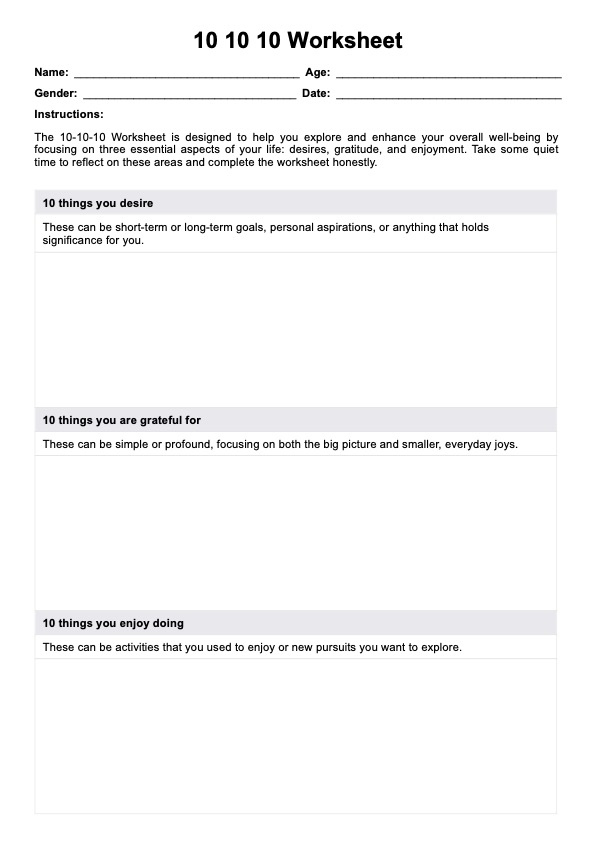Well, it's pretty flexible—it totally depends on the person. Daily or weekly, or whenever the respondent needs a mood boost or goal-setting clarity.

10 10 10 Worksheet
Help clients transform their life with the 10 10 10 Worksheet. Empower them to manifest their dreams to create a fulfilling life. Try it today!
10 10 10 Worksheet Template
Commonly asked questions
A person can repeat their favorite desires and activities. It's like telling the universe, "Hey, these things matter to me a lot!" If anything, repeating the same desires and dreams reinforces to a person that these things are what matters to them and will motivate them to keep going.
No. While it's a valuable self-help tool, it doesn't replace professional mental health support. If a person has specific concerns, seeking guidance from a licensed therapist is recommended.
EHR and practice management software
Get started for free
*No credit card required
Free
$0/usd
Unlimited clients
Telehealth
1GB of storage
Client portal text
Automated billing and online payments











